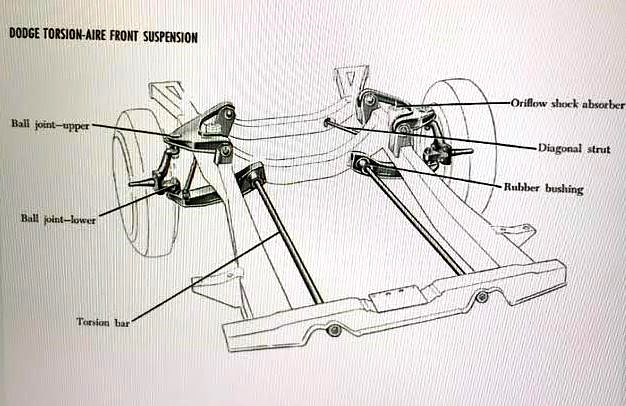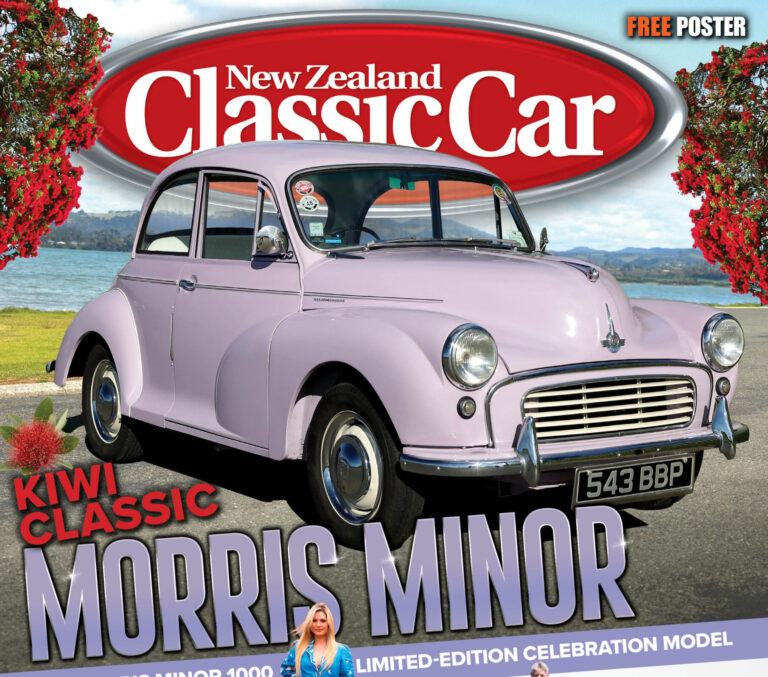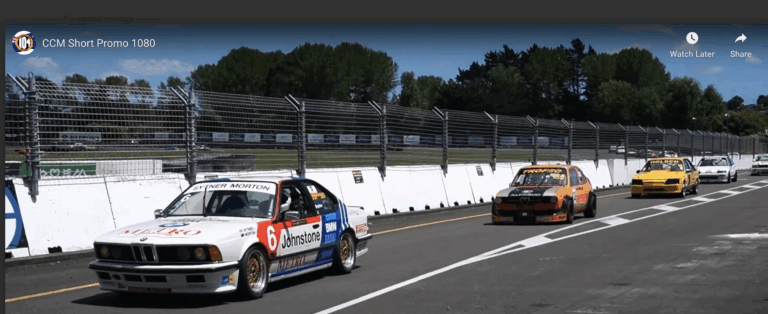1958 Plymouth Savoy Two-door Sedan
Jet age fantasy was in full flight following World War II and the space race of the 1950s only lit the imagination afterburners among leading American automotive stylists
By Quinton Taylor
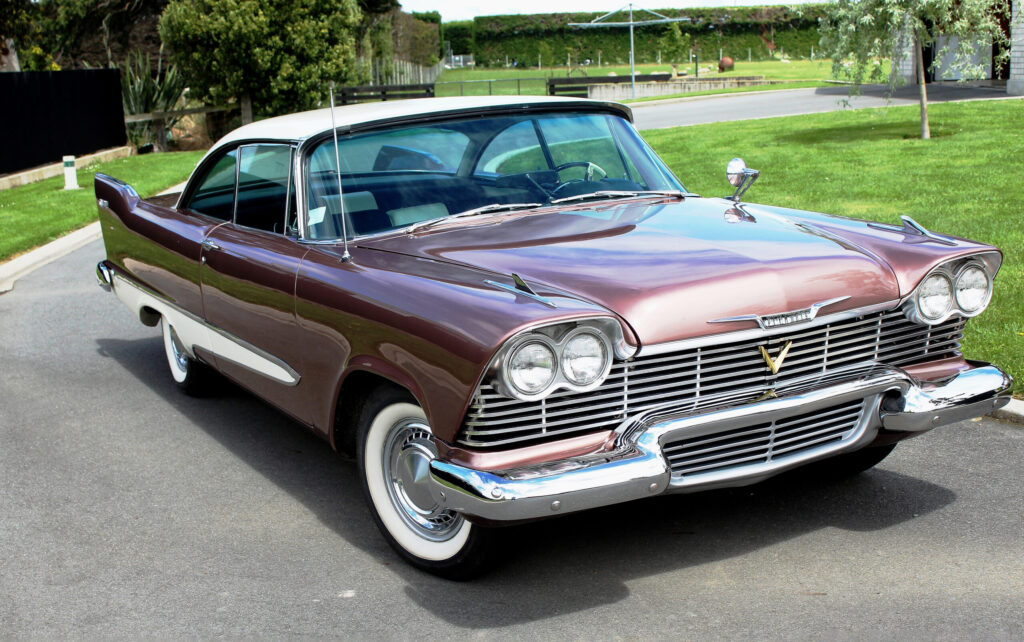
Chrysler gambled and got the jump on the other members of the big three, Ford and General Motors (GM), when the launch of its third generation Plymouth/Dodge/DeSoto line-up for 1957 ushered in its dramatic ‘Flight Sweep’ styling. Chrysler hammered home its bold move with advertising campaigns announcing: “Suddenly it’s 1960!”
Gone were the big upright Chrysler bodies of the early 1950s, replaced with dramatic rising rear wings armed with banks of tail lights mimicking jet exhausts. Up front, twin headlights shielded in dramatic slanted eye-brows crested lower and wider front guards with full-width stainless steel grilles, and massive chrome bumper bars. High-tech space-ship styling wraparound front and rear windscreens complemented the leaner and lower look, emphasised by lower, thinner rooflines.
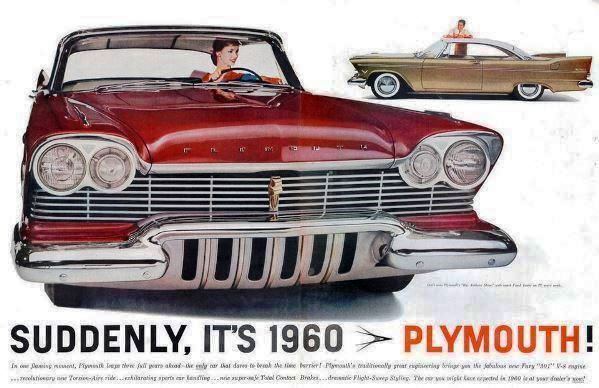
Flight fright
The long and low theme stranded the car makers persevering with more conservative and upright styling. Just as in 1934 when it introduced its dramatic ‘Airflow’ models, Chrysler had again led a major change in styling direction for the US auto industry ushering a new battle between the teams led by Virgil Exner at Chrysler and GM’s Harley Earl. Ironically, it was Earl who, borrowing aircraft thinking, had introduced rear wings on 1950s concept cars for stability at speed. Exner and Raymond Loewy had already combined at Studebaker a decade before to bring in the bullet noses and swept-back styling of the Studebaker brand before Exner moved to Chrysler in 1949. Studebaker’s 1950s styling was not a huge success, so the introduction of Chrysler’s ‘Flight Sweep’ styling was a considerable gamble.
The effect was immediate. GM fought back with the winged styling icon that would become the ’57 Chevrolet Bel Air, along with the first of the Chevrolet Corvettes. Not to be outdone, its Buick and especially Cadillac divisions went all out for the biggest rear fender wings and tons of glitz. The gloves were off. Brands suddenly emphasised wheelbase sizes, such as Buick’s Electra 225. Engines got bigger and more powerful in the quest to swing over buyers. Ford followed with a little more restraint, introducing some equally notable models such as the Continental Mark II, Lincoln Landau, Mercury Monterey, Fairlane 500, and — of course — the iconic Thunderbird. It dropped the ball with the Edsel which rapidly faded away in 1959. However, its line-up put Ford into the top of the sales charts in 1957 for the first time in 21 years. In 1934 Chrysler’s radical ‘Airflow’ styling had flopped, but this time Chrysler was making an impact on sales and on the race track helped along by its legendary ‘Hemi’ V8 engines introduced in 1952. Many US car makers had also been working with Italian styling houses, such as Ghia and Bertone, and concept cars from these companies, such as the Alfa Romeo BAT aerodynamic cars, only added to the plethora of concept cars from nearly every US automaker.
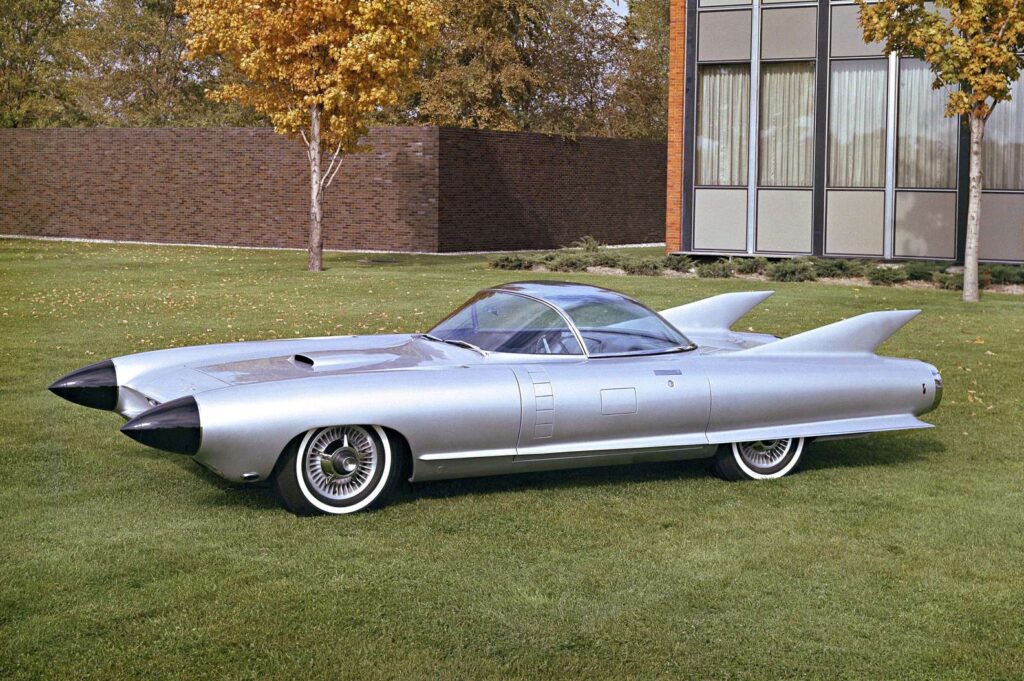
Style and substance
The third-generation Chrysler cars also ushered in a lower chassis frame and a change to smaller 14-inch wheels from Plymouth’s 1956 models helping to accentuate a look of speed with a longer 118-in (2997mm) wheelbase on the sedans, and 122-in (3099mm) wheelbase for the wagons. Chrysler was not finished either, launching a luxury range of Imperial, Chrysler 300 and 500 models sporting bigger wings, more chrome, and bigger engines heading for the ultimate excess of the 1970 Plymouth Superbird.
Desperate for market leadership, Chrysler had gone all out with the new look for their new cars and it also took on the challenge of a whole raft of engineering improvements to match the new shape. Chrysler’s engineers had been busy. There was a new independent torsion-bar front suspension, with double wishbones and ball-joints creating a wider track and lower centre of gravity. The rear suspension was also redesigned to match the ride qualities of the new front. The torsion-bar-twisting forces on the chassis meant an additional torque box mounting up front, and, with the new sleeker body, it meant a complete redesign of the chassis box section for the torsion bar pick-up points, while also retaining acceptable interior head and legroom.
Chrysler won press accolades for its improved handling and ride control. Bigger brakes were also added up front, although it was still drums all-round. The model also ushered in Chrysler’s new three-speed TorqueFlite automatic transmission, earning a reputation for reliability, and becoming the transmission of choice among many up-market manufacturers in Europe and the US. It was even thought to have been licensed to Ford. You could still order an option of the two-speed PowerFlite transmission along with a three-speed manual gearbox. The TorqueFlite was even good enough for the drag-strip, enabling it to beat manual transmissions with reliability over the crucial quarter-mile drag. It also became American Motor’s transmission of choice.
Under the bonnet, the line-up of engines began with Chrysler’s torquey 225cu-in six, or either a 270cu-in, 301cu-in, or 318cu-in V8s. In 1958, detail changes to improve durability and suspect build quality as a result of the hurried introduction the year before saw the entry of a performance option and a massive lift in build quality. A ‘Fury’ option tempted buyers with a range of V8 engines up to a 395cu-in (6.5 litre) V8. The Fury would go on to become a standalone model with detail trim changes rather than just a performance option, immortalised in its starring role in the classic Christine movie adapted from Stephen King’s novel of the same name. Along with a new four-door hardtop model, the longer wheelbase for the Savoy (Dodge Kingsway in Canada) station wagon and coupe models accentuated the new style. It’s a shape that has become increasingly popular with classic buyers today.
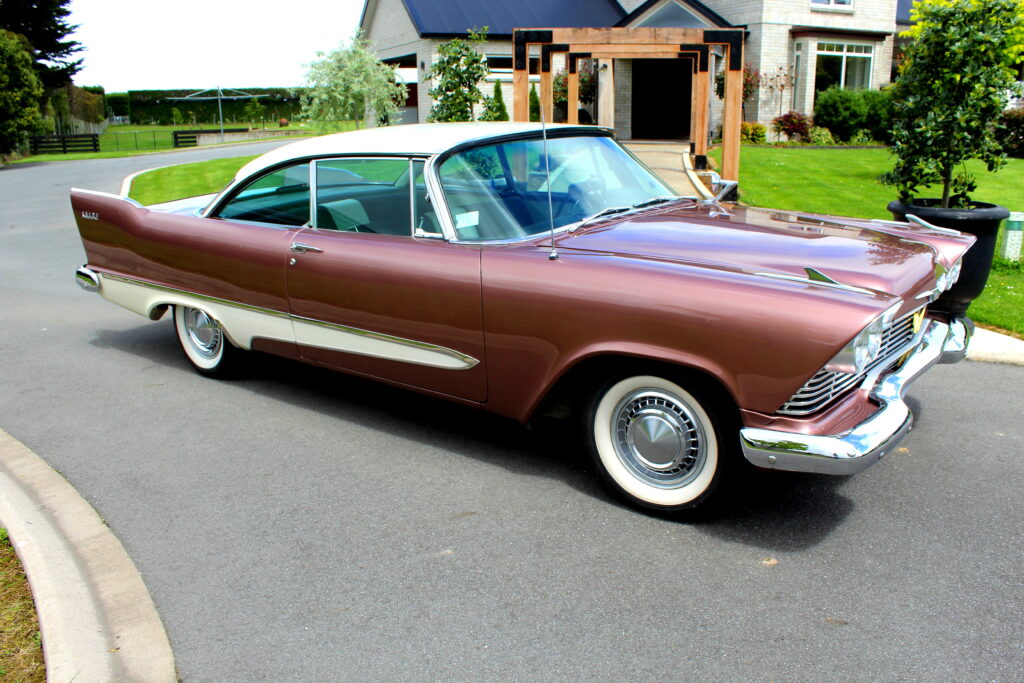
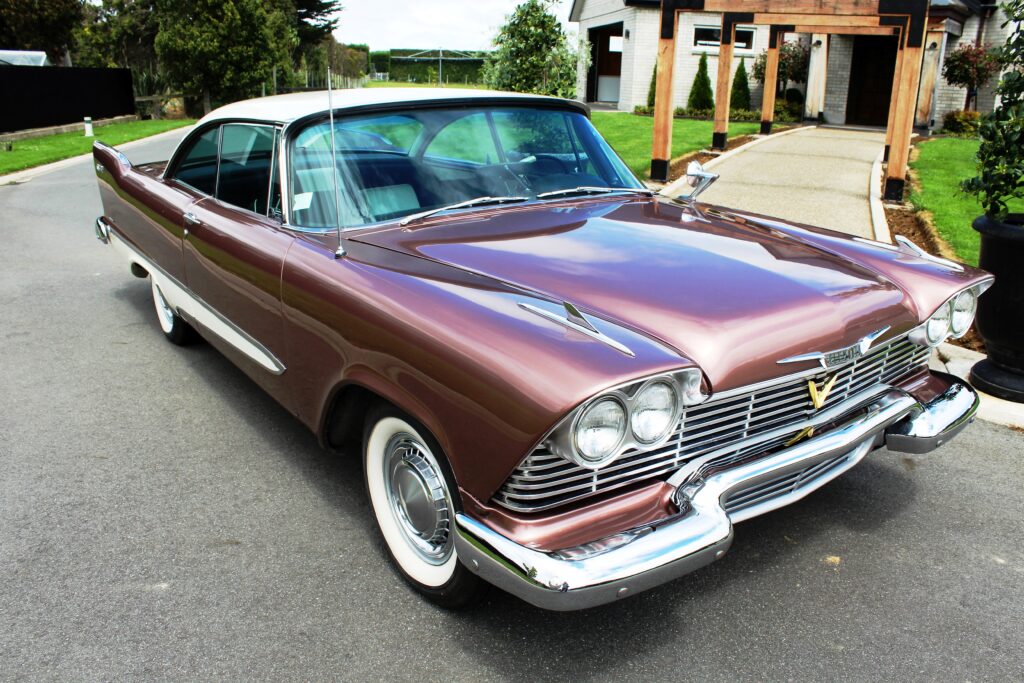
Texas gal
Neville Horton enjoys tinkering with classics and his Invercargill collection has a few surprises. It consists mostly of rare European microcars, some being restored and others in top running condition. It’s quite a contrast then when Neville opens up his main garage to reveal his impressive 1958 Plymouth Savoy two-door pillarless sedan. At 207.8in (5177mm) in length, parking it in anything less than a trailer park is a challenge.
For a car more than 60 years old, it is in remarkable condition. The two-tone brown and white colour scheme adds to its commanding presence, finished off by the chrome banded flash of a white spear down each side. A mild tint to the large glass area adds a cool modern touch to this design and, except for some exterior trim, it is close to the layout Chrysler used for its Fury models.
Neville was always keen to get his hands on one of these big Plymouths. His father owned a four-door version back in Neville’s youth. His father’s Plymouth sedan would later provide a surprising coincidence shortly after Neville bought his coupe into the country, as Neville explains.
“I imported it from Austin, Texas, from a company that runs its own classic car and restoration TV series, The Legendary Motor Company. It’s a very original car. It was tired but I’ve done nothing to the body at all,” he says.
The Plymouth arrived in 2012.
“Getting it imported into the country was straightforward enough, although it was not well crated. It should have been covered in plastic too in the container. It came in through Dunedin. Fortunately there were no issues except for a big GST bill.”
With an indicated 30,000miles (48,000km) on the odometer Neville set to and had the 318cu-in V8 motor and two-speed PowerFlite transmission re-built locally.
“It looked pretty much like it had the original oil in it. The motor was very tired.”
The front seats were also recovered in the distinctive metallic stitched jacquard fabric to match the original cloth.
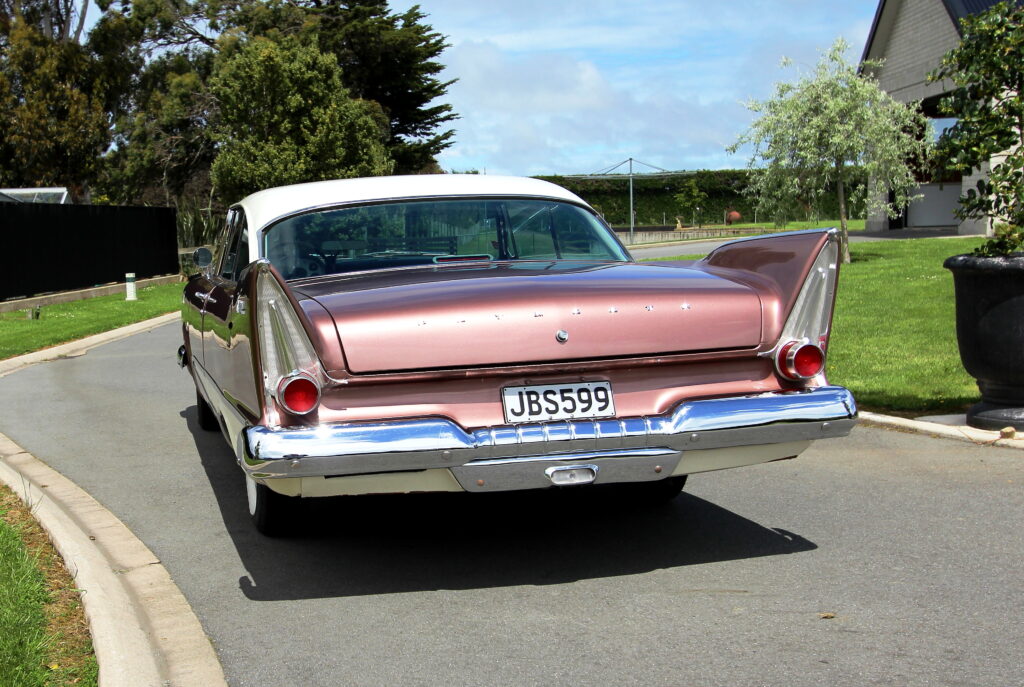
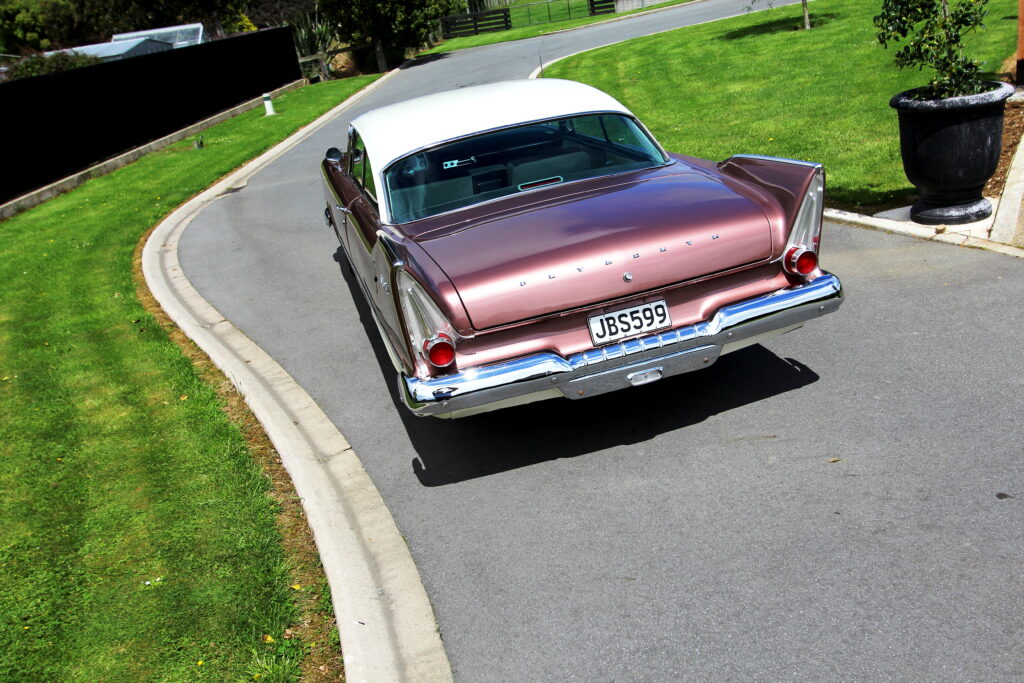
Déjà vu
As previously mentioned, Neville’s father owned one of these Plymouths, a four-door sedan. At some time around the 1980s, Neville began the process of stripping this car with the intention of tidying it up.
“To get the process going I took all the chrome off it and stuck it in the back boot. Then I got it sandblasted and primed, and when I had done that it was all put away in a shed. Then, while I was away in Australia, he sold it!”
Thirty years later, 2012 also sees Neville with a 1958 Savoy project, searching for parts to complete it. By chance Neville’s wife had an uncle who knew someone who had a collection of parts and he lived nearby. There was a surprise in store for Neville when he saw them.
“I got the address from my contact for the car parts and went around to see him. When he pulled all this stuff out, low and behold, it was all the stuff I had wrapped up about 25 years ago! It was still in the same newspaper I had used — all my old man’s car’s parts. I was thinking about converting this one to right-hand drive, so I had my father’s steering box and all the linkages and that and it could have been done, but then as I was advised, all my numbers matched including the engine number and, as it was just as it came off the factory, and the original colours as well, I decided not to [convert it to right-hand drive].”
However, his father’s collection of parts handily supplied the correct headlights for local road conditions. The drum brakes proved to be a bigger challenge. Incorrect machining of the front brake drums had damaged them beyond repair. It was the start of a lengthy and costly saga.
“I ended up getting a set of drums from a guy in Canada which are brand new old stock.”
The brake dramas didn’t end there.
“The brake shoes on the back also needed work. They went to another guy who reamed out the rivets incorrectly. When I got them back I took them down to BNT and they said they were so wrong they couldn’t do anything with them. I then sent the drums to another local engineer who made new rivets and correctly machined the drums. I got the back drums going well, but the front ones kept locking up.”
In desperation to get the car on the road and registered there was only one solution.
“After a while I got disc brakes put in on the front. I’ve still got drums on the back but it now comes to a stop safely. I had issues bedding them in and eventually it was all settled in and going well. It was $5000 in the end for this work and it wasn’t supposed to be that, but I ended up putting a whole new brake kit on the front end.”
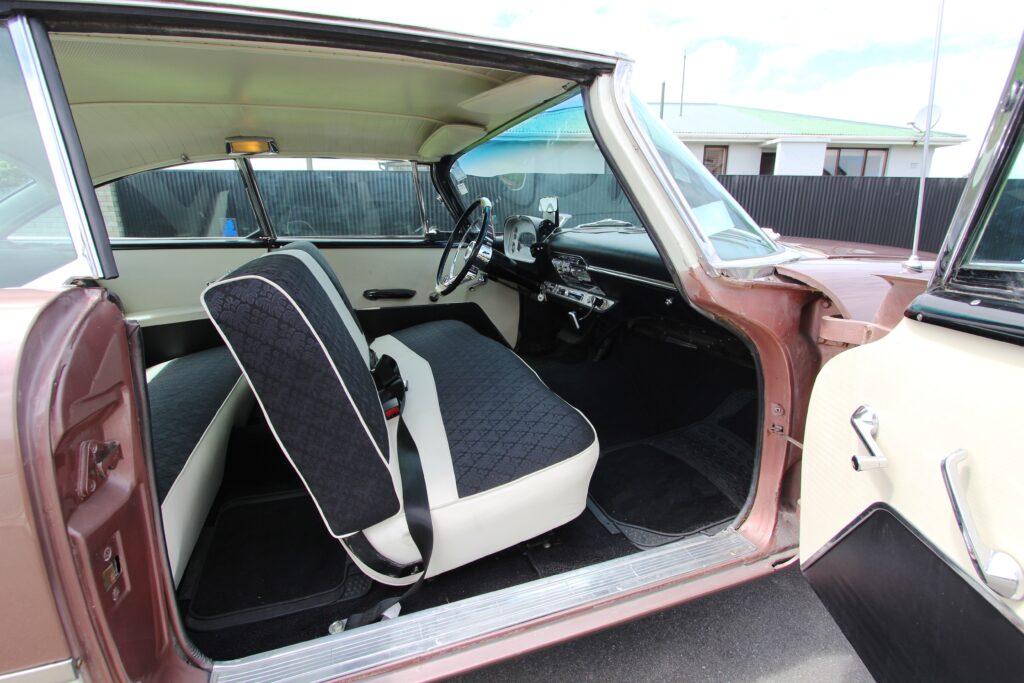
Cream cruise
Neville is now able to enjoy cruising in the big Plymouth. It has room for six to stretch out on those big wide bench seats and enjoy the panoramic views afforded by winding down the pillarless windows. It’s extreme cruising. Neville says the easy, loping big V8 is not too bad on fuel at a light throttle. Plymouth didn’t skimp on bling in these cars. Big clear gauges are mounted on a machine-turned dashboard in a large binnacle, fronted by a two-tone steering wheel featuring lots of chrome, of course.
“It’s been very good and I’ve got no issues with it at all. I do like that dash, and the push-button transmission selector, and everything works fine.”
The Plymouth also has an electric fuel pump, a worthwhile improvement over the old mechanical fuel pump. When this model was rushed into production in 1957, several issues became apparent in the model. They were largely addressed for the 1958 update. Perhaps the dry Texas climate helped this one too.
“They have a reputation for rusting out underneath and in the boot, but mine had no rust in it at all. It was very free of rust but I do have a bit of work planned for the sills and a tidy up around the door pillars.”
Chryslers have grown in popularity although there are still less than a dozen examples of this model on the road in New Zealand, along with a few of the 1957 models.
It’s an effortless open road cruiser and if you like wings then you will cherish the Chrysler Savoy’s role in getting the ball rolling on the most amazing era in US automotive history. This one has lasted well and it does leave a lasting impression of a time when style was everything and the bolder the better.
The 1957-1958 model year was a watershed moment for the highly competitive US car industry. Chrysler’s styling proved a rallying cry for an industry stuck in the sober constraints of post-war America. It took a risk with underdeveloped cars, which cost it in sales, but like its rocketship inspiration, it clearly showed the way forward to a brighter and flashier future — a world without limits.
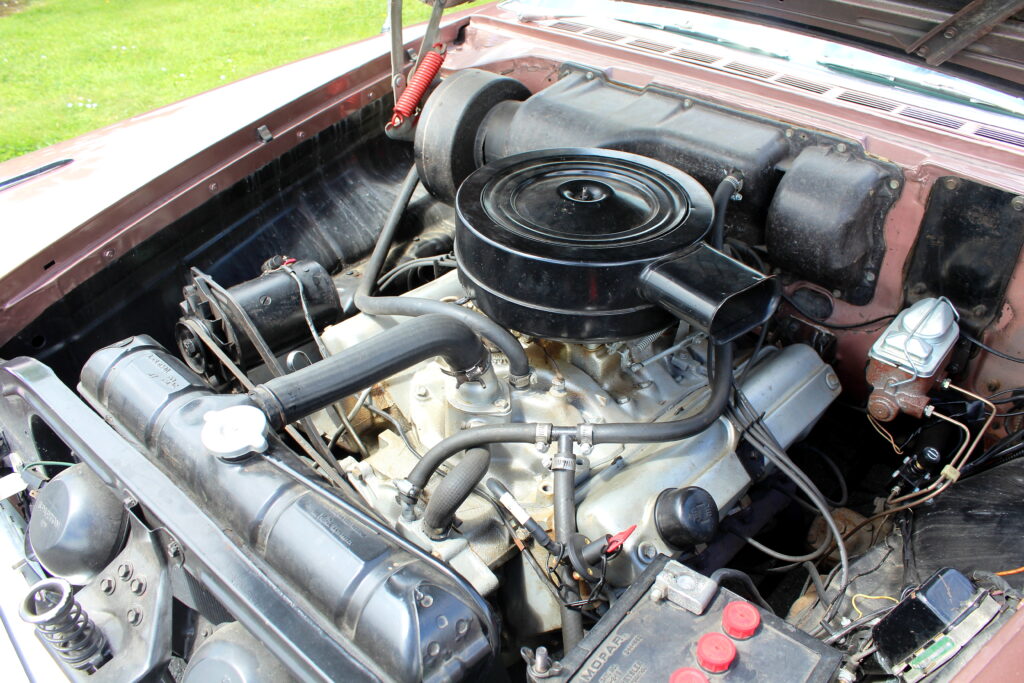
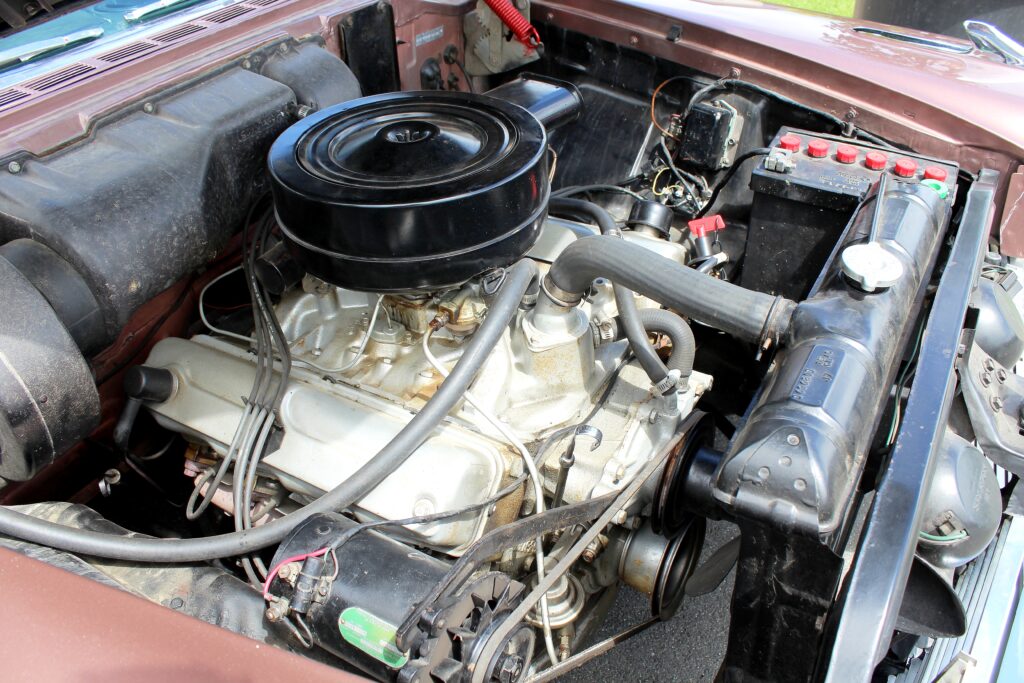
Tech Specs
1958 PLYMOUTH SAVOY TWO-DOOR SEDAN
Engine: Iron block V8, water-cooled, 318cu-in (5205cc). Five main bearing, two-barrel Carter carburettor. Compression ratio 9.00:1. Hydraulic valve lifters and single camshaft
Bore & Stroke: 3.9in (99mm) x 3.3in (84mm)
Horsepower: 225bhp (168kW) @ 4,400rpm. Torque: 330ft Ibs (447.4Nm) @ 2,800rpm
Transmission: Two-speed automatic (PowerFlite), three-speed manual, three-speed automatic (TorqueFlite)
Suspension F/R: Torsion bars and independent wishbones. Solid hypoid differential axle and longitudinal leaf springs
Differential ratio: 3.54:1
Steering: Worm and roller
Brakes: Four-wheel drum brakes, 11-in front and rear (disc front on feature car)
Length: 203.8in (5177mm)
Width: 78in (1387mm)
Height: 54in (1372mm)
Front track: 60.9in (1547mm)
Rear track: 59.6in (1514mm)
Wheelbase: 115.0in (2921mm)
Weight: 3400 lbs
Tyres: 8.00 x 14in x 6in
Fuel tank: 20 gallons
Performance:
0-60mph (97kph : 7.6s
Standing quarter mile: 16s
Manufacturer: Chrysler (Plymouth USA and Dodge in Canada), 1957–1959. Assembly plants in USA, Canada, Mexico (Automex), and India (Premier Autos, Bombay).
Available in: four-door station wagon, two-door sedan, two-door hardtop, four-door sedan, four-door hardtop. 17,624 two-door hardtops made. Four engine options from 225c-in six, up to 318cu-in V8. Chrysler Australia produced the Plymouth Savoy from 1954– 1957, along with a utility Coupe version from 1956–1958
Total Plymouth production for 1958: 443,799. 1958 Fury production: 5,303.
Current values: Level #1 by assessment, US$24,700; Level #2 Excellent condition, Level #3 Good, US$16,800; Level #4, Fair, US$9,400 (Source: Hagerty’s Auctions USA)
